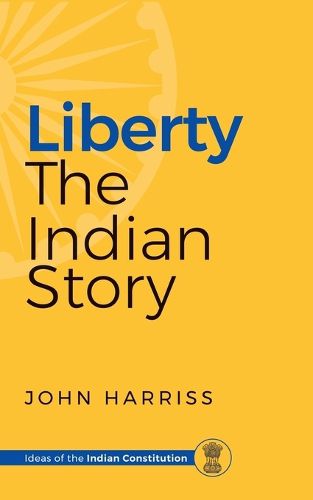Readings Newsletter
Become a Readings Member to make your shopping experience even easier.
Sign in or sign up for free!
You’re not far away from qualifying for FREE standard shipping within Australia
You’ve qualified for FREE standard shipping within Australia
The cart is loading…






This title is printed to order. This book may have been self-published. If so, we cannot guarantee the quality of the content. In the main most books will have gone through the editing process however some may not. We therefore suggest that you be aware of this before ordering this book. If in doubt check either the author or publisher’s details as we are unable to accept any returns unless they are faulty. Please contact us if you have any questions.
Few societies in the 19th and early 20th centuries remained untouched by the
radical new idea of liberty, which implied both individual freedom and freedom
from despotic rule. The leaders of India's anti-colonial struggle, in making
the concept their own, expanded its purview. But this definition of freedom,
understood as socio-economic justice, was found to be fundamentally at odds
with its narrower meaning during the debates in the Constituent Assembly.
As Professor John Harriss shows in this book, a fierce battle has thus played
out ever since the setting up of the Republic between what are referred to as
negative and positive freedoms, or, broadly, the guarantees of the Fundamental
Rights, and the goals of the Directive Principles of State Policy. The contest
has often been one between a judiciary adhering to the Constitution and a
Parliament pursuing what Nehru called 'real freedom' for the masses. Several
Constitutional amendments-the 1st of 1951, the 24th and 25th of 1971, the
42nd of 1976-ended up placing restrictions on individual freedoms as much
as they pushed the agenda of social reform. Much worse happened, however, in
the name of national security, like the 16th Amendment of 1963, which brought
about the Unlawful Activities (Prevention) Act four years later. With the curbing
of our individual liberties and leaden steps, at best, towards reform under
successive governments, the central constitutional aim of liberty is still a long
way off.
This monograph lucidly explains the difficult relationship between the
Constitution and the Parliament, a relationship that must be clearly understood
if we are ever to strike the right balance between the freedom of the individual
and 'real freedom', as dreamt of by those who founded the Indian republic.
$9.00 standard shipping within Australia
FREE standard shipping within Australia for orders over $100.00
Express & International shipping calculated at checkout
This title is printed to order. This book may have been self-published. If so, we cannot guarantee the quality of the content. In the main most books will have gone through the editing process however some may not. We therefore suggest that you be aware of this before ordering this book. If in doubt check either the author or publisher’s details as we are unable to accept any returns unless they are faulty. Please contact us if you have any questions.
Few societies in the 19th and early 20th centuries remained untouched by the
radical new idea of liberty, which implied both individual freedom and freedom
from despotic rule. The leaders of India's anti-colonial struggle, in making
the concept their own, expanded its purview. But this definition of freedom,
understood as socio-economic justice, was found to be fundamentally at odds
with its narrower meaning during the debates in the Constituent Assembly.
As Professor John Harriss shows in this book, a fierce battle has thus played
out ever since the setting up of the Republic between what are referred to as
negative and positive freedoms, or, broadly, the guarantees of the Fundamental
Rights, and the goals of the Directive Principles of State Policy. The contest
has often been one between a judiciary adhering to the Constitution and a
Parliament pursuing what Nehru called 'real freedom' for the masses. Several
Constitutional amendments-the 1st of 1951, the 24th and 25th of 1971, the
42nd of 1976-ended up placing restrictions on individual freedoms as much
as they pushed the agenda of social reform. Much worse happened, however, in
the name of national security, like the 16th Amendment of 1963, which brought
about the Unlawful Activities (Prevention) Act four years later. With the curbing
of our individual liberties and leaden steps, at best, towards reform under
successive governments, the central constitutional aim of liberty is still a long
way off.
This monograph lucidly explains the difficult relationship between the
Constitution and the Parliament, a relationship that must be clearly understood
if we are ever to strike the right balance between the freedom of the individual
and 'real freedom', as dreamt of by those who founded the Indian republic.